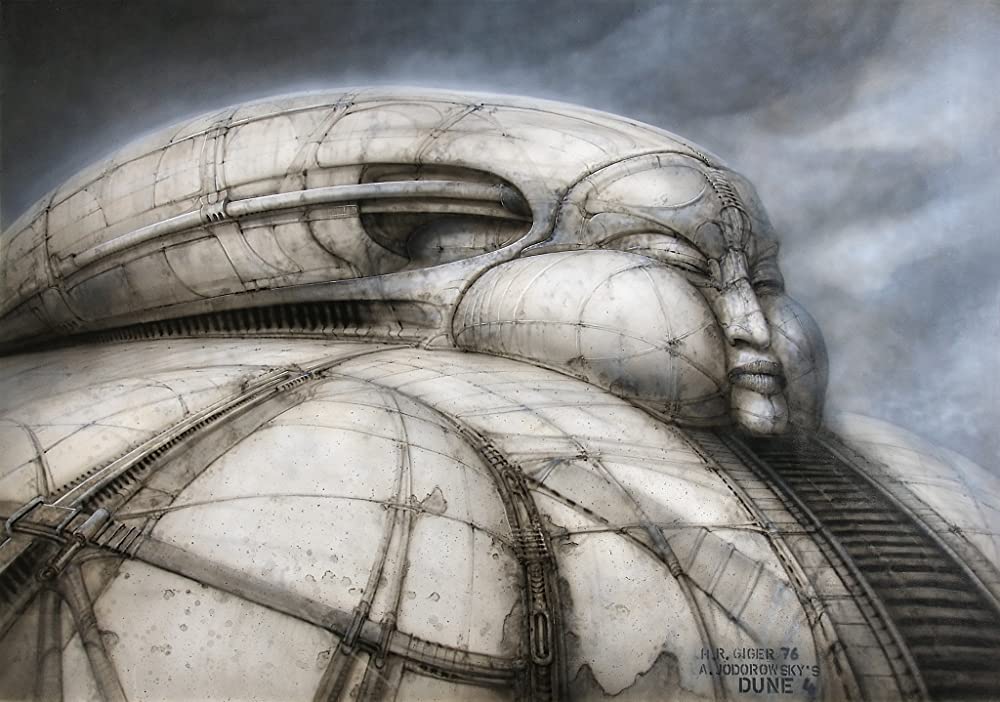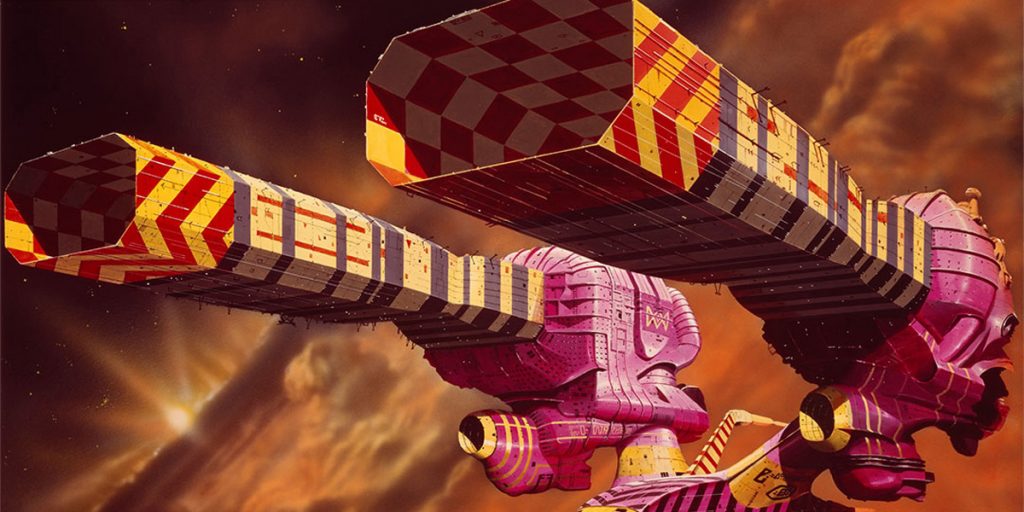Jodorowsky’s Dune chronicles the story of what could have been the most ambitious film ever made and its surprising impact on science fiction cinema.
Welcome to Countdown to Dune! In this five-part series, I will be exploring all the onscreen adaptations of Frank Herbert’s science fiction epic novel “Dune.” As we wait in desperate anticipation for the new blockbuster film from Denis Villeneuve, there is still time to catch up on the previous films and television miniseries. Previously in this series, I reviewed David Lynch’s 1984 film Dune, followed by the 2000 miniseries Frank Herbert’s Dune and its 2003 sequel Children of Dune. This week I am reviewing Jodorowsky’s Dune, a documentary about the initial efforts to bring “Dune” to the big screen, and next week I will share my thoughts about what we can anticipate from Villeneuve’s upcoming film.
An ode to creativity and a lament to unrealized ambitions, Jodorowsky’s Dune tells the story of one of cinema’s most quixotic productions. Following the success of the 1973 surreal masterpiece The Holy Mountain, Chilean-French filmmaker Alejandro Jodorowsky and producer Michel Seydoux began work on a cinematic adaptation of Frank Herbert’s groundbreaking science fiction novel “Dune.” Jodorowsky’s original vision was to create a twelve-hour psychedelic film that would capture the experience of LSD hallucinations and “change the young minds of all the world.” He assembled an international team of “spiritual warriors” including special effects supervisor Dan O’Bannon and artists H.R. Giger, Moebius, and Chris Foss and invited bands Magma and Pink Floyd to score the music, welcoming their collaboration and creative freedom in bringing this vision to life. Next, he assembled a remarkable cast including his twelve-year-old son Brontis as Paul, Salvador Dalí as the Emperor, Amanda Lear as Princess Irulan, Orson Welles as Baron Harkonnen, Mick Jagger as Feyd-Rautha, and David Carradine as Duke Leto.
Jodorowsky took great liberties with Frank Herbert’s novel, adding new scenes like Paul’s conception and death and imagining new concepts like a gargantuan Harkonnen castle built to resemble the evil Baron. He and his team then laid out their vision for the film in a massive book full of character, costume, and spaceship designs and intricate storyboards with detailed cinematographic notes on scene descriptions and camera movements. When Jodorowsky finally brought his plans to Hollywood to present to studio executives, they were impressed with his ideas, but asked for a different director and wanted to keep the film around ninety minutes. Due to budgetary issues and creative constraints that Jodorowsky was not willing to meet, the film ultimately fell apart. While not fully realized, this unmade film proved to be deeply influential on future science fiction films, inspiring visual concepts and designs for Star Wars, Flash Gordon, Raiders of the Lost Ark, Blade Runner, The Terminator, and Prometheus, and several of Jodorowsky’s “spiritual warriors” later reunited to work on another masterpiece of the genre, Alien.

Frank Pavich’s documentary spins a compelling narrative around this story with archival footage, memorable interview segments, and several amusing anecdotes. Most captivating is Jodorowsky himself, speaking with animated gusto and passion as he recounts stories like the outrageous demands made by Salvador Dalí and Orson Welles to act in his film and an amusing moment where he plays with his cat as he speaks, although he unfortunately makes some shocking, egregious comments about his creative process that are concerning. Other interview subjects include Michel Seydoux, Brontis Jodorowsky, H.R. Giger, Chris Foss, Amanda Lear, stunt coordinator Jean-Pierre Vignau, Dan O’Bannon’s widow Diane, and outsider perspectives from Star Wars producer Gary Kurtz and filmmakers like Richard Stanley and Nicolas Winding-Refn.
Jodorowsky’s Dune wisely spends most of its attention and 90-minute runtime detailing the production’s ambitions, only dwelling on the reasons for its eventual failure for a short time. This isn’t necessarily a documentary about failure, rather a celebration of the untamed imagination that was too powerful for its budgetary and commercial constraints. Most unique about the documentary is its unique approach in visualizing unfilmed scenes with animated storyboard sequences that bring these sketches to life, taunting us with what could have been some of the most bizarre and dazzling visual experiences in cinema. Towards the end, Jodorowsky flips through the pages of the concept book, revealing the stunning art and unrealized imagination of this brilliant vision that sadly never made its way to the screen.
In some ways, Jodorowsky’s Dune is a tantalizing documentary to watch. It’s sad to see that this film was never completed and that we were never given the chance to witness what would have been some of the most ambitious, mind-bending visual sequences ever put to screen. Jodorowsky’s adaptation would have greatly strayed from the original vision of the novel yet would have made for an unforgettable artistic experience that would have left cinema in a much different place than where it is today. Had this film been made, it’s possible that Star Wars (if that would have even existed after this) would have had a much less powerful impact on science fiction and blockbuster filmmaking, and one wonders what those kinds of films might look like in a post-Dune by Jodorowsky film industry. Ultimately, Jodorowsky’s Dune is an inspiring documentary, reminding us of the boundless potential of the imagination, and even under the material constraints that prevent our greatest ambitions from coming to life, there is a remarkable spirit in the human condition to create.

